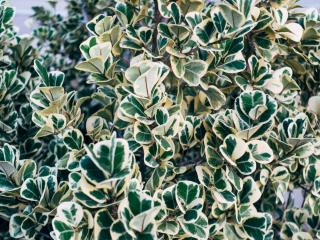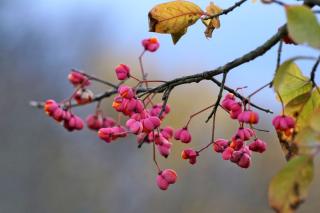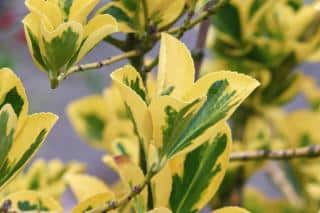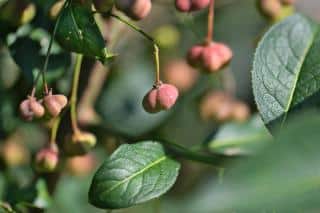

Spindle hosts a unique and very ornamental leafage.
Short list of Spindle facts
Name – Euonymus
Family – Celastraceae
Type – shrub
Height – 1 ⅓ to 16 feet (0.5 to 5 m)
Exposure – full sun, part sun
Soil: ordinary – Foliage: deciduous or evergreen – Fruit formation: fall
Care, from planting to pruning, will help you enhance the growth of your spindles.
The most promising season to plant spindle is fall, in order to promote root growth and settling in.
 If you must plant in spring, provide for more regular watering over the summer.
If you must plant in spring, provide for more regular watering over the summer.
In a hedge, keep a distance of at least 32 inches (80 cm) to 3 feet (1 meter) between specimens.
Spindle is easily propagated through cuttings and through grafting.
 Preparing cuttings is the easier and quicker of the two if you’re looking to multiply your spindle.
Preparing cuttings is the easier and quicker of the two if you’re looking to multiply your spindle.
 Pruning isn’t a mandatory obligation, but it is performed if the shrub must be reduced in size or if its shape must be altered.
Pruning isn’t a mandatory obligation, but it is performed if the shrub must be reduced in size or if its shape must be altered.
Caring for it is very easy and only calls for very little attention apart from the pruning.
Spindle is a shrub that requires only little watering, except in case of extended dry spells.
Potted spindle also has more pressing needs in terms of water.
Spindle is quite the hardy one and it resists diseases and parasites well, but it occasionally is tickled by mites and ticks, aphids and mealybugs.
Among the more common diseases infecting spindle, note powdery mildew which is clearly recognized due to its whitish velvety layer spreading across the leaves.
 Spindle fruits are unique and the many different varieties will let you select from a rainbow of colors.
Spindle fruits are unique and the many different varieties will let you select from a rainbow of colors.
The fruits are encased in capsules that open up in fall. Their seeds naturally attract birds thanks to their yellow, red or orange colors that stand out with the red casing.
Spindle does fine in normal strong summers, but it fears heat waves and that’s why it isn’t always found along coasts in warmer climates.
It doesn’t fear freezing, and can be planted almost anywhere in temperate climates.
Spindle is perfectly adapted to evergreen hedges and it will additionally provide you with a wide range of often original colors.